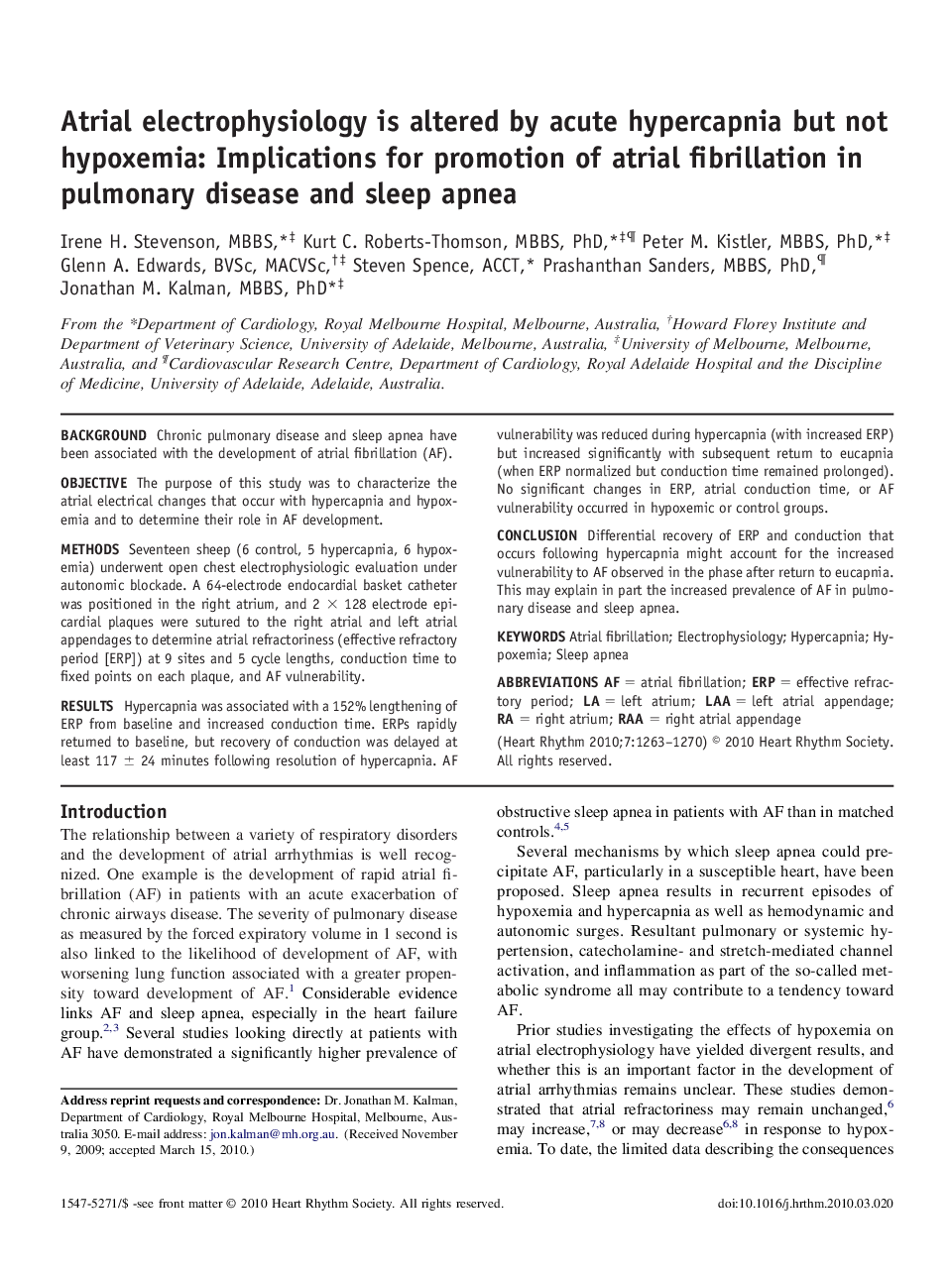| کد مقاله | کد نشریه | سال انتشار | مقاله انگلیسی | نسخه تمام متن |
|---|---|---|---|---|
| 2923449 | 1175874 | 2010 | 8 صفحه PDF | دانلود رایگان |

BackgroundChronic pulmonary disease and sleep apnea have been associated with the development of atrial fibrillation (AF).ObjectiveThe purpose of this study was to characterize the atrial electrical changes that occur with hypercapnia and hypoxemia and to determine their role in AF development.MethodsSeventeen sheep (6 control, 5 hypercapnia, 6 hypoxemia) underwent open chest electrophysiologic evaluation under autonomic blockade. A 64-electrode endocardial basket catheter was positioned in the right atrium, and 2 × 128 electrode epicardial plaques were sutured to the right atrial and left atrial appendages to determine atrial refractoriness (effective refractory period [ERP]) at 9 sites and 5 cycle lengths, conduction time to fixed points on each plaque, and AF vulnerability.ResultsHypercapnia was associated with a 152% lengthening of ERP from baseline and increased conduction time. ERPs rapidly returned to baseline, but recovery of conduction was delayed at least 117 ± 24 minutes following resolution of hypercapnia. AF vulnerability was reduced during hypercapnia (with increased ERP) but increased significantly with subsequent return to eucapnia (when ERP normalized but conduction time remained prolonged). No significant changes in ERP, atrial conduction time, or AF vulnerability occurred in hypoxemic or control groups.ConclusionDifferential recovery of ERP and conduction that occurs following hypercapnia might account for the increased vulnerability to AF observed in the phase after return to eucapnia. This may explain in part the increased prevalence of AF in pulmonary disease and sleep apnea.
Journal: Heart Rhythm - Volume 7, Issue 9, September 2010, Pages 1263–1270